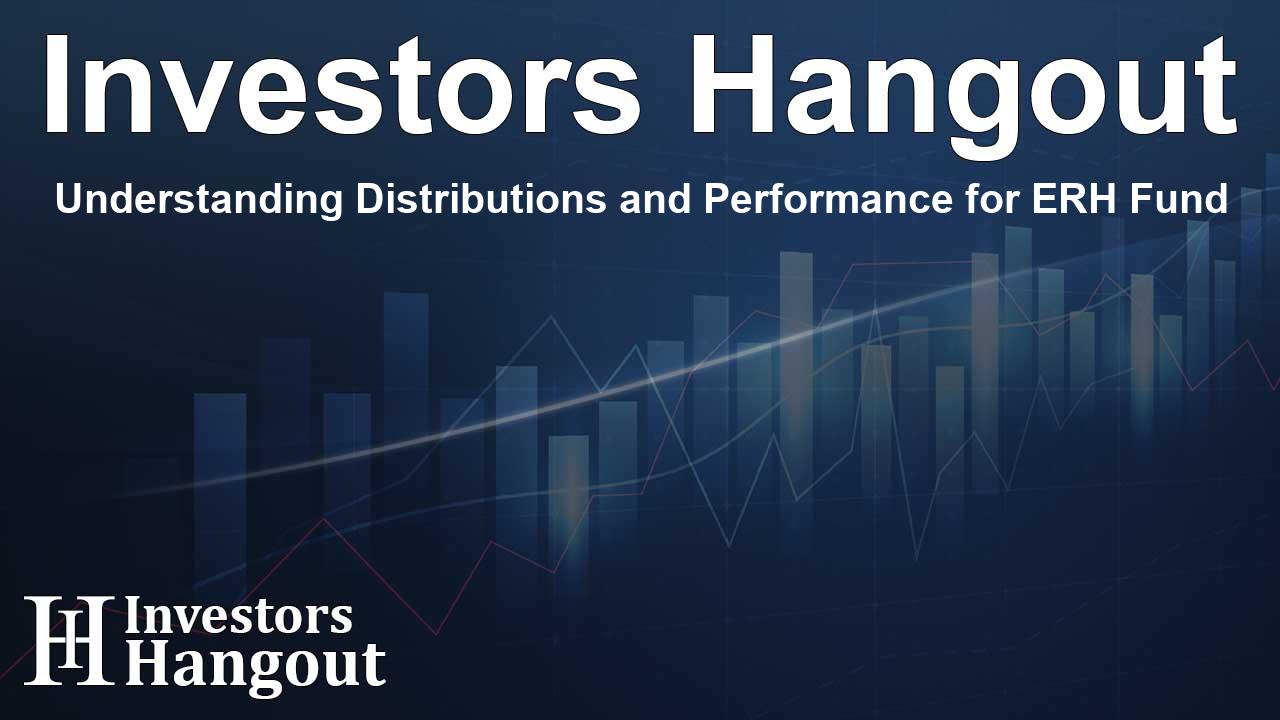Understanding Distributions and Performance for ERH Fund

Overview of the Allspring Utilities and High Income Fund
The Allspring Utilities and High Income Fund (ERH) is a closed-end fund designed for investors who seek high current income along with moderate capital growth. The fund primarily targets investments in equity and high-yield bonds, offering what it describes as tax-advantaged dividend income. Understanding how this fund operates is crucial for current and prospective investors.
Distribution of Earnings
This fund provides monthly distributions, which are a combination of various income sources. It's important for investors to assess the underlying factors contributing to these distributions, as they reflect the fund's financial health. The fund aims for an annual minimum fixed rate distribution of 7.0%, based on its average monthly net asset value (NAV) from the past year.
Return of Capital Explained
It's essential for shareholders to note that a portion of the distributions may be classified as a return of capital. This situation arises when the fund pays out more than its earned income or net realized capital gains. While this does not necessarily reflect how well the fund is performing, it's critical information for understanding how your investment may be impacted over time.
Distribution Sources and Financial Performance
The distributions from the fund derive from various sources, including net investment income, short-term capital gains, long-term capital gains, and if necessary, capital paid in by investors. For the current fiscal year, the amounts and sources provided in official notices rely on estimates, which can vary significantly depending on the fund's performance over time.
Impact of the Managed Distribution Plan
Under the managed distribution plan, there is a potential for the fund to declare distributions that may exceed the earnings generated from its investments. This scenario can lead to a decline in the fund's NAV and may distort the yield perceived by investors. To ensure a clear understanding of the fund’s performance, investors are encouraged not to view distribution amounts as direct indicators of investment success.
Estimating Distribution Patterns
The fund offers transparency about its distribution strategies and the fiscal year-to-date cumulative amounts. This data helps investors see if the expected returns are adequate to sustain the declared distributions. It’s crucial to monitor these estimates regularly to stay informed about potential shifts in investment strategy or market conditions.
Long-Term Goals and Returns
Ultimately, the investment objective for the Allspring Utilities and High Income Fund revolves around generating a consistent income stream while also achieving growth. Investors must consider the projected returns over various time frames to determine the overall efficacy of their investment decisions.
Understanding Risks Involved
Investing in this fund entails a range of risks due to its focus on the utilities sector and high-yield bond markets. Equity securities are particularly susceptible to market fluctuations resulting from changes in the economic landscape. Additionally, leveraging strategies that the fund may employ can lead to increased volatility, affecting both NAV and market share value. Investors must carefully evaluate these factors when considering an investment in the fund.
Market Dynamics and Regulatory Changes
Foreign investments introduce further layers of risk associated with political and economic instabilities, which can significantly impact investment outcomes. The fund challenges typical investment norms through its strategies, which may yield unique advantages within specified market conditions.
Conclusion: Making Informed Decisions
Overall, investing in the Allspring Utilities and High Income Fund requires a careful analysis of market trends, fund performance, and distribution strategies. Being informed about potential risks and the nature of capital returns will help investors navigate their investment path effectively.
Frequently Asked Questions
What is the Allspring Utilities and High Income Fund?
The Allspring Utilities and High Income Fund (ERH) is a closed-end equity and high-yield bond fund that focuses on generating high current income and moderate capital growth.
How are distributions calculated for the fund?
Distributions are calculated based on the fund's average monthly net asset value (NAV) and can include returns from income, capital gains, and paid-in capital.
What does a return of capital mean for investors?
A return of capital indicates that some of the money initially invested may be paid back to investors, reflecting a portion of distributions that exceeds earned income or capital gains.
How does leveraging affect the fund's performance?
Leveraging can amplify both gains and losses, affecting the volatility of the fund's net asset value and market price.
How should investors interpret the fund's distribution amounts?
Distribution amounts should not be viewed as indicators of the fund's investment performance. Instead, they need to consider the overall investment strategy and market conditions.
About The Author
Contact Riley Hayes privately here. Or send an email with ATTN: Riley Hayes as the subject to contact@investorshangout.com.
About Investors Hangout
Investors Hangout is a leading online stock forum for financial discussion and learning, offering a wide range of free tools and resources. It draws in traders of all levels, who exchange market knowledge, investigate trading tactics, and keep an eye on industry developments in real time. Featuring financial articles, stock message boards, quotes, charts, company profiles, and live news updates. Through cooperative learning and a wealth of informational resources, it helps users from novices creating their first portfolios to experts honing their techniques. Join Investors Hangout today: https://investorshangout.com/
The content of this article is based on factual, publicly available information and does not represent legal, financial, or investment advice. Investors Hangout does not offer financial advice, and the author is not a licensed financial advisor. Consult a qualified advisor before making any financial or investment decisions based on this article. This article should not be considered advice to purchase, sell, or hold any securities or other investments. If any of the material provided here is inaccurate, please contact us for corrections.
